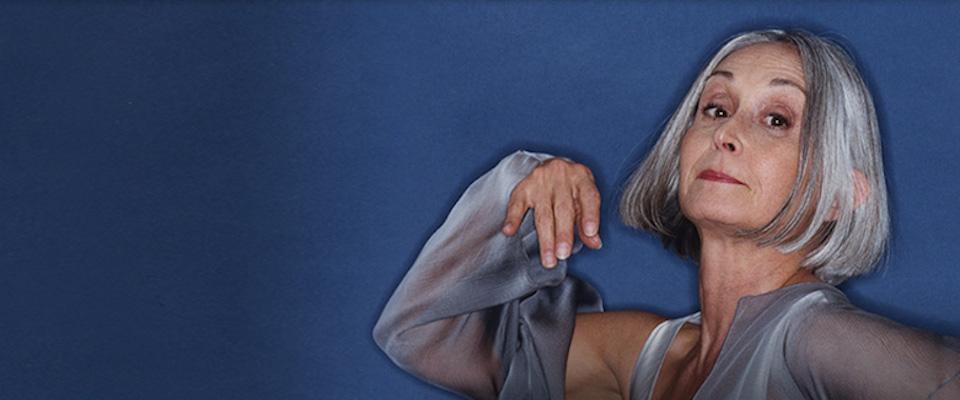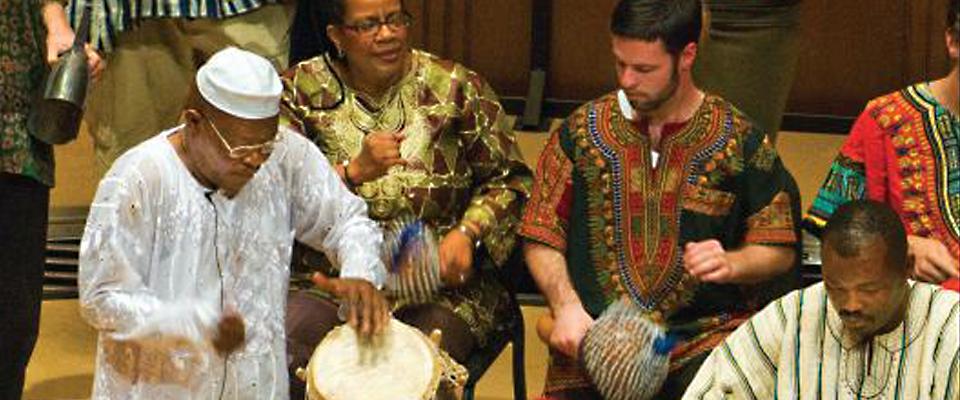Choreographer Patrick Makuakane has a progressive approach to Hawaii’s ancient dance form
Ask Patrick Makuakane about his work, and the phrase “only in San Francisco” comes up often. The San Francisco-based choreographer creates hula of a kind you won’t see at tourist luaus.
“Only in San Francisco” could just as easily describe Makuakane, who has made hula in the Bay Area his own. “If I were working in Hawaii, I think it would be different,” he says. “There’s a sense of artistic freedom here that you just don’t find anywhere else.”
Twenty-four years after founding the acclaimed dance troupe Na Lei Hulu I Ka Wekiu, Makuakane has given the ancient Hawaiian dance form new appeal for contemporary audiences. In the process, he’s become a central figure in the Bay Area dance scene.
Makuakane, who started his career in his native Hawaii, is steeped in tradition. Yet he’s clearly an innovator who believes that hula could use a little nudge into the 21st century. His choreography is fierce, fast paced, often funny, and always forward looking, and his ensemble is just as likely to dance to pop songs, disco hits, or opera arias as to Hawaiian music.
In a recent interview at his two-story home atop Potrero Hill, Makuakane said that living in the Bay Area has shaped his hula style in immeasurable ways. It was here that he developed the choreographic style he dubbed hula mua—literally, progressive hula.
“Hula’s always been broken down into two categories,” Makuakane explained. “There’s hula kahiko, which is traditional dances done to accompaniment by percussive instruments, drums, and chanting. And there’s hula ‘auana, which is the contemporary hula most people are familiar with, done to the accompaniment of guitars, ukuleles, and singing. Throughout my career, I’ve always done traditional dances mixed with uber-modern hula. It’s hula vocabulary done to modern music, and it doesn’t fit into either of those categories. So I wanted to name it, give it its own little place, so that people know it’s not traditional, it’s not ‘auana. It’s something else.”
Makuakane, 47, is a kind of goodwill ambassador for hula. In addition to choreographing the group’s shows, he always serves as their informal host. Part of his job, as he sees it, is introducing first-timers to the joys of hula. “People come expecting to see silly dances in grass skirts,” he said. “They have no concept of the depth and breadth of hula, and they usually find that it far outweighs their expectations.”
But Makuakane’s chief goal is to expand the boundaries of hula, and his shows earn their greatest accolades from aficionados. He allows that purists don’t always get his approach: “I’m sure I’ve ruffled a few feathers,” he says. Yet he insists that even his most modern choreography honors the past. “I don’t take traditional dances and turn them on their heads. I take modern music and choreograph to that. There’s a big difference,” he explains. “I leave the traditional pieces alone, and we always do a sprinkling of them in each show. They have an inherent beauty that doesn’t need to be changed.”
Born and raised on the windward side of O’ahu, near Kaneohe, Makuakane wasn’t particularly interested in hula as a child. Like many Hawaiian kids in the 1970s, he listened to pop songs. As a teenager, though, he got interested in Hawaiian music. He enrolled in a singing class; to his surprise, the curriculum included hula. “The instructor said ‘In this group you have to dance and sing,'” he recalled. “I was not interested in dancing at all. But after two weeks, I was hooked.”
He went on to study with hula masters Robert Cazimero and “Aunty” Mae Klein. It was under Klein’s guidance that Makuakane became a kumu hula—the highest rank a hula teacher can achieve. He still returns to the islands to study with her.
In 1984, he moved to San Francisco and started teaching in a borrowed dance studio on Sanchez Street. “There wasn’t a lot of hula in the Bay Area then,” he said. His first class, which focused on traditional hula, was about 20 students. They soon became the core of Na Lei Hulu I Ka Wekiu (which translates to The Many Feathered Wreaths at the Summit, Held in High Esteem). As Makuakane’s classes grew, so did the scope of his choreography. He began using nontraditional music and making longer, more complex narrative dances. Founded in 1985, the group got its first big exposure at the San Francisco Ethnic Dance Festival. Makuakane now serves on the festival’s advisory board. He is also the recipient of numerous awards, including the Isadora Duncan, or “Izzie,” for excellence in Bay Area dance.
Today Makuakane teaches 6 classes a week and has more than 250 students, with 35 in the performing group. Dance is only part of the program; his students also learn Hawaiian language, history, and arts and crafts. The troupe’s wide-ranging appearances have included an annual home show at the Palace of Fine Arts and performances at Lincoln Center in New York, as well as venues in Los Angeles, New Orleans—and, of course, Honolulu. “That’s the big test,” declared Makuakane of the Hawaiian capital. “But people there really love what we’re doing. They get bored seeing the same old things all the time, and they appreciate the variety.”
On March 28, Cal Performances brings the ensemble to Zellerbach Hall. In two performances, the program focuses on O’ahu—not surprisingly, Makuakane’s favorite island. “I think O’ahu is unfairly maligned,” he insisted. “People say it’s too touristy. But there are so many beautiful aspects to it—special places, sacred sites, the best food, the best music. I wanted to celebrate that.” Included in the Zellerbach program are hulas honoring Ku-Kani-Loko, a sacred birthing ground of ancient royalty; and Ka’ena Point, the westernmost tip of the island. “It was considered a leaping-off place for souls entering the spiritual dimension,” he said.
The show will also visit a 20th-century institution, Hula’s Bar and Lei Stand. “It was Waikiki’s first disco,” noted Makuakane. “It was all the rage in the ’70s. It really had that island groove going on.” Asked what music he’ll use, he grins—it’s a medley, mixing Hawaiian songs with the disco anthem “I Will Survive” by Gloria Gaynor. “Only in San Francisco,” he smiled.




















